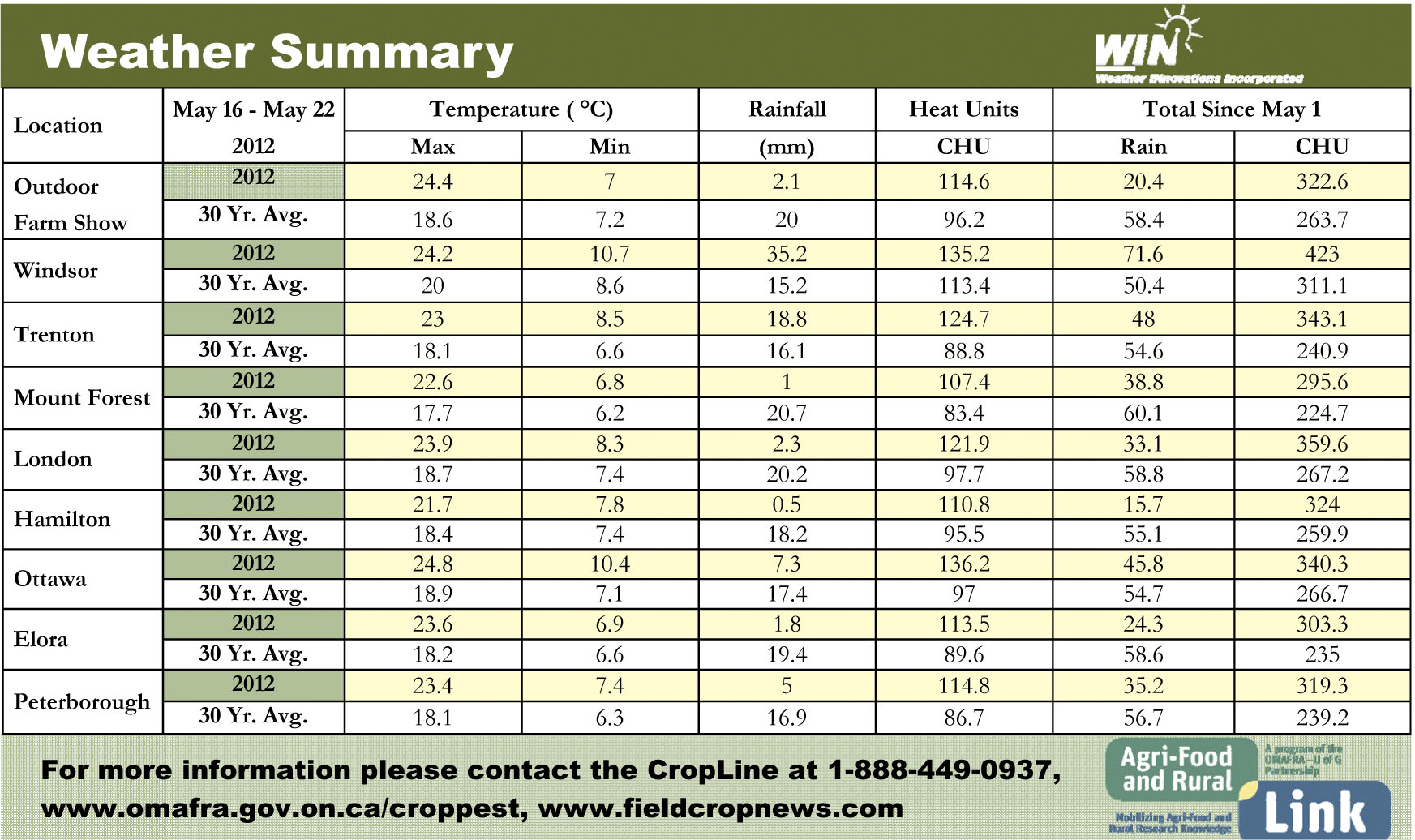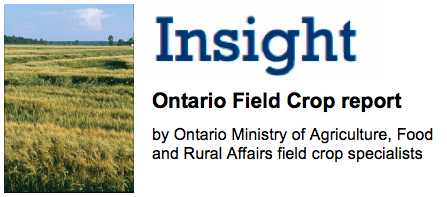Canola/Edible Beans: Brian Hall
Canola planting is complete in most areas. April planted canola is at 2-4 leaf stage and advancing rapidly. Plant populations are fair to average (4-8 plants/ft2) with some replanting due to weather related stress and flea beetles. Flea beetle pressure is high in most areas. Sprays have no residual control so scout several days later to evaluate flea beetle populations. Populations are highest in field borders. Scout up to 4 leaf stage. Threshold for control is 25% leaf feeding. Critical weed control period is 1-4 leaf stage but schedule weed control at early stages. Weeds that emerge with canola cause greatest yield reductions. Take time to clean spray tanks thoroughly before applying post-emergent, as canola is quite sensitive to many herbicide.
Edible bean planting has started with 10 percent in. Soil conditions have been excellent with good soil moisture. Field trials have generally not shown economic response to nitrogen, although applying a small amount of N (30-40 lb/ac) encourages rapid vegetative growth, canopy closure and stimulates root growth which can aid in overcoming stress caused by root rot or other factors. The safe rate of fertilizer side banded is 27 lbs/ac N or a total of 80 lbs/ac N+K. Fertilizer should not be seed placed. Injury will be increased under dry conditions.
Cereals: Peter Johnson/Scott Banks
Winter wheat is heading rapidly. Wheat west of London will be ready for fusarium sprays by the weekend, with the crop north and east following closely. Stripe rust and high aphid numbers have been found in Chatham-Kent. Scout! Threshold is 50 aphids/stem after heading. Barley yellow dwarf virus (BYDV) symptoms are showing at surprising levels in many fields, vectored by aphids. Armyworm is present at low levels. Armyworm insecticides control aphids. Mildew levels remain high in lush fields.
Spring cereals are progressing rapidly with early fields at second node (GS32). Disease levels in rainfall areas are increasing while dry areas remain clean. High aphid numbers and BYDV in winter cereals make scouting essential in spring cereals. Threshold of 12 aphids/stem warrant control prior to heading. Remember that oats must have a fungicide applied at flag leaf to control crown rust, as genetic resistance has been lost.
Corn: Greg Stewart
Corn planting is essentially complete across Ontario other then a small amount of replanting due to emergence/stand issues or where corn is following first cut alfalfa. Use the Replant Decision Aid posted at www.gocorn.net if considering this where stands are thin. Start with accurate plant counts of the current stand and consider all the replanting economics (crop insurance, seed costs, herbicide and equipment costs, etc). Corn leaf development requires ~75 CHU per leaf. Some areas came close to advancing by two full leaf stages over the last week. Weed control should be the priority as the crop moves through the critical 3-4 leaf stage. If applying UAN using streamer nozzles in the last half of May, use the full pre-plant nitrogen rate not the typically 10-20 % lower side-dress rate. Use the N Calculator at www.gocorn.net for rate selection. Warm dry weather conditions may increase the amount of soil N supply. Soil N testing (PSNT) may help fine tune side-dress N rates.

Forages: Joel Bagg
Haylage started in full swing on May 21st in some areas. Yields are disappointing, with two thirds of normal yield or less reported. Some alfalfa fields severely damaged by winterkill and disease are being harvested early and planted to corn silage. Planting as soon as possible with adequate moisture is essential to successful corn silage yields (http://bit.ly/omafraforages9). Significant alfalfa weevil feeding has been detected in the south-west. Scout your fields! Feeding damage starts as leaf pinholes, progresses to feeding between the leaf veins and results in a skeletonized appearance. Larvae are bright-green with a white stripe down the back. Insecticide is recommended only when immediate cutting is not practical. Second-cut regrowth should be scouted in severely affected fields (http://fieldcropnews.com/?p=3108). Grub damage in hay fields has been reported. The best option in severely damaged fields is tillage, this exposes the grubs to predators followed by replanting the field into a crop that has insecticide seed treatment options available e.g. corn, soybeans (http://fieldcropnews.com/?p=2786). Alfalfa maturity is extremely variable due to frost damage and poor growth. “Scissors-cut” field sampling and rapid laboratory analysis indicate grasses are much more mature than the alfalfa. In mixed stands, be sure to watch the maturity of the grasses (http://fieldcropnews.com/?p=2610).
Soybeans: Horst Bohner
Soybean planting is essentially finished. Eastern Ontario is about 90 percent complete and some clay soils still need to be seeded. This has been one of the earliest planting seasons in recent memory. In the southwest some areas have been so dry that seed had to be placed over two inches deep to find moisture. Some early planted fields have been replanted but most fields have emerged quickly due to warm temperatures. Do not consider replanting unless the stand count is below 100,000 plants per acre while a minimum of 120,000 is recommended on clay soils.
| Attachment | Size |
|---|---|
| 136.88 KB |



